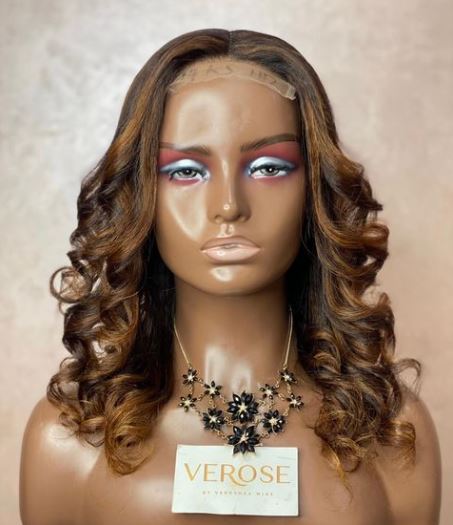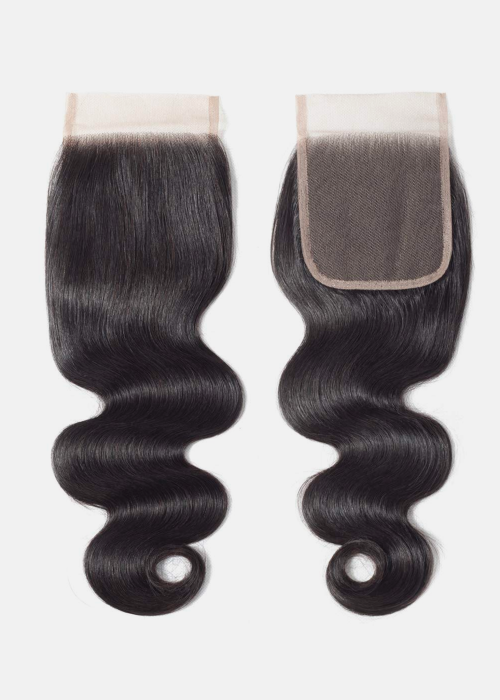Wigs and weaves are not just about changing your hairstyle; they’re about transforming your entire look. These versatile hair extensions offer endless possibilities for expressing your unique style and personality. Moreover, when installed correctly, they serve as excellent protective styles. With numerous options available in the market, navigating the world of hair extensions can be overwhelming. Whether you’re considering wearing a wig or a weave for the first time but have no idea where to start, we’re here to help! Here is our comprehensive guide on everything you need to know about wigs and weaves. Additionally, we’ll point you in the direction of where to find high-quality human hair wigs and weaves in Nairobi. By the end of this guide, you’ll feel ready and confident to embrace a new hairstyle.
What is a wig?
Wigs are hairpieces designed to cover the entire scalp and made out of human or synthetic hair. Wigs are an easy way to change your look often and with relative ease. They come in many different, versatile forms such as frontal wigs, lace-front wigs, and even u-part wigs. Whether you choose to glue your wig down, wear a wig band, or just pop it on and off every day, wigs are definitely a fun way to change things up whenever you need.
Types of wigs

There are generally two main types of wigs namely: human hair and synthetic wigs.
Human hair wigs
True to its name, a human hair wig is crafted entirely from natural hair, delivering a remarkable softness and glossy sheen that translates into exceptional versatility for styling. Not only do these wigs exude a natural appearance and feel, but they also boast remarkable durability, often lasting anywhere from one to three years with proper care.
However, maintaining their pristine condition demands extra diligence in care and maintenance because just like natural human hair, these wigs are prone to tangling and can become matted. The creation of a human hair wig entails several meticulous steps.
It begins with the collection of high-quality human hair, which is then carefully sorted and prepared. Skilled wig makers proceed to construct the wig cap with precision, ensuring a perfect fit. Each hair strand is then meticulously hand-tied onto the cap, crafting a natural hairline and achieving an overall realistic appearance.
Synthetic wigs
These wigs are made from artificial plastic fibers that mimic real hair but differ in quality. They come in a variety of styles and colors but unlike human hair wigs, synthetic wigs can’t be dyed, heat styled, or manipulated, and they’re usually meant to be worn exactly how they’re bought.
The advantage of this is that synthetic wigs are usually far more affordable, compared to human hair wigs. However, this hair is less durable than human hair and will generally last 4-6 months with proper care.
Advantages and disadvantages of wigs

Advantages
- Instantly change your hairstyle.
- Versatile styling options.
- Convenient for those experiencing hair loss.
- Low maintenance.
- Protects natural hair from heat and styling damage.
Disadvantages
- Can be expensive, especially human hair wigs.
- Synthetic wigs may look less natural.
- Requires proper maintenance and care.
- Potential discomfort if not fitted correctly.
- Limited breathability, which can cause discomfort in hot weather.
What to consider when purchasing a wig
Budget: Determine your budget before shopping for wig options. Wigs vary widely in price, depending on factors such as material, craftsmanship, and brand. Setting a budget aside helps narrow down choices and ensures you find a wig that meets your budget while still meeting your desired quality standards.
Material: Consider the material of the wig, which can significantly impact its appearance, durability, and maintenance requirements. As mentioned earlier, synthetic wigs are typically more affordable and require less maintenance, while human hair wigs offer a more natural look and feel, albeit at a higher price point. Choose a material that aligns with your preferences and lifestyle.
Face shape: When selecting a wig style, it’s crucial to consider your face shape, as different styles can either enhance or balance your facial features. For instance, if you have a round face, opting for a wig with layers and volume on top can effectively create the illusion of length, complementing your facial structure. On the other hand, if you have a square face, choosing a wig with soft curls or waves can help soften the angular lines, achieving a more harmonious and flattering look. By choosing a wig style that aligns with your face shape, you can accentuate your best features and achieve a more balanced and polished appearance.
Cap size: Achieving the proper fit of your wig is essential for both comfort and a natural appearance. Start by measuring your head circumference to determine the appropriate cap size. Most wigs come with adjustable straps or clasps to help achieve a secure fit. Selecting a wig cap size that matches your measurements is crucial to avoid discomfort or slippage during wear.
Brand Reputation: Research the reputation of different wig brands before making a purchase. Look for brands known for their quality craftsmanship, durability, and customer satisfaction. Reading reviews and seeking recommendations from friends or hair professionals can help you identify reputable brands that consistently deliver high-quality wigs. Wondering where to buy quality wigs in Nairobi? Here are a few wig stores/brands we trust and recommend. Verushka, Human Hair Center, Natural Hair Kenya ( For synthetic wigs and extensions) and Lilly Hairline.
What is a weave?

A weave involves attaching hair extensions to natural hair to add length, volume, or color. The extensions can be sewn, glued, or clipped into the hair. Weaves require a bit more commitment, depending on how you style them, but that doesn’t make them any less wearable than wigs. Weaves can be installed in a variety of ways such as:
Sew-In Weave
This method involves braiding the natural hair into cornrows and then sewing wefts of hair extensions onto the braids using a needle and thread, providing a secure and long-lasting installation. With the sew-in method, one can choose between a full sew-in or a partial sew-in. A full sew-in involves braiding all of your natural hair down completely, sewing wefts from ear to ear, and attaching a closure along the hairline.
This method fully covers the wearer’s natural hair, making it a popular choice as a protective style. By completely covering the natural hair, a full sew-in helps to shield it from environmental damage and styling stress, promoting healthier hair growth.

On the other hand, a partial sew-in involves sewing wefts directly onto flat braids, with a small piece of natural hair left out in the front, side, or back of the wearer’s head. This technique allows for the versatility of wearing the hair in up-dos and ponytails. After the installation, the natural hair left out is seamlessly blended with the extensions by flat ironing, ensuring they match the pattern of the hair texture for a cohesive and natural look.
Clip-in extensions
Clip-in extensions feature wefts of hair with attached clips that can be easily clipped onto the natural hair, offering a temporary and versatile installation method without the need for sewing or glue. You don’t have to go to a professional hairstylist to have clip-ins installed, but the only drawback is that they require you to manipulate your hair more than you would with a sew-in.
Glue-In (Bonded) Weave
With this method, hair extensions are bonded either to a person’s natural hair or a protective hair cap using a specially formulated adhesive. This process provides a quick and seamless installation. However, it’s essential to ensure proper application to prevent damage to the natural hair.
Micro links
This is a hair extension method where Small metal or silicone rings are used to attach individual strands of hair extensions to small sections of your natural hair, providing a lightweight and flexible installation method that allows for natural movement. Microlinks are slowly becoming popular in Kenya and they are meant to be a more natural-looking alternative to sew-ins. Depending on care and maintenance, micro links can last between three to six months. You can get a micro link installation done at Hair Couture Kenya.

Advantages and disadvantages of weaves
Advantages
- Adds length and volume to natural hair.
- Provides styling versatility.
- Conceals thinning or damaged hair.
- Long-lasting when properly maintained.
- Allows for hair growth while wearing protective styles.
Disadvantages
- Requires professional installation.
- Can cause tension and damage to natural hair if installed incorrectly.
- Regular maintenance needed.
- Limits access to the scalp when washing the hair.
- Potential for allergic reactions to adhesive or extensions.

What to consider when purchasing a weave

Hair Type and Texture
Consider the type and texture of the weave hair, such as Brazilian, Peruvian, or Malaysian, as well as whether you prefer straight, wavy, curly, or kinky textures. Choose a hair type and texture that aligns with your natural hair and desired look.
Installation Method
Decide on the installation method for the weave, whether you prefer a sew-in, clip-in, or micro link method. Each method offers different levels of permanence, ease of application, and versatility.
Maintenance Requirements
Consider the maintenance requirements of the weave, including washing, conditioning, styling, and upkeep. Choose a weave that fits your lifestyle and maintenance preferences to ensure long-lasting wear and optimal appearance.
Quality of Hair Extensions
Assess the quality of the weave hair extensions, considering factors such as the source of the hair, whether it is virgin or processed, and the overall condition of the hair. Look for high-quality hair extensions that are soft, manageable, and durable for long-lasting wear. Check out our range of quality hair extensions from Urembo Luxe Shop.
While both wigs and weaves offer temporary hairstyle changes, the main difference between the two is that wigs cover the entire scalp, while weaves are integrated with natural hair or installed on a portion of braided hair. Wigs and weaves are a powerful tool of self-expression, whichever you opt for, remember to prioritize proper maintenance and care to ensure stunning results.


